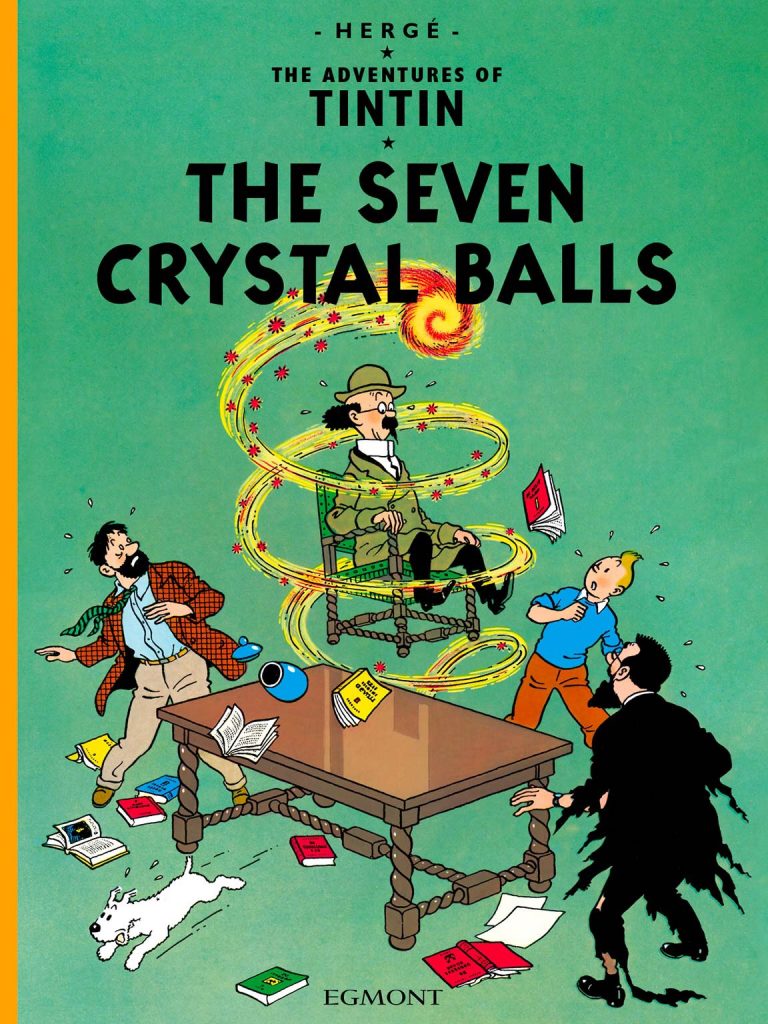

The thirteenth of the ‘official’ albums, and the third of four double-bill type adventures in the series overall, The Seven Crystal Balls is pure classic Tintin.
A Peruvian expedition gets a brief mention as Tintin travels by steam train to Marlinspike Hall, after which a lengthy episode develops around Captain Haddock’s efforts to replicate a music-hall magic trick in which a conjuror turns water into whisky.
There’s much hilarity and some beautifully rendered comic pratfalls as Tintin and the now wealthy Haddock (see The Secret of the Unicorn and Red Rackham’s Treasure) – trying out being the monocled country gent – follow this zany thread.
But Hergé also cleverly interweaves this slapstick stuff with the unfolding of the adventures more serious plot, using General Alcazar – now the knife-throwing ‘Ramon Zarate’ – and his Inca assistant, plus an Indian mind-reading duo (and a Castafiore cameo, for good measure), to link back to the Peruvian expedition, and the foretold fate of the ‘meddling foreigners’, who dare loot sacred Inca stuff!
As the plot thickens, the seven members of the Sanders-Hardiman Peruvian team are knobbled, one by one, via the titular seven crystal balls. Thompson and Thomson, Tintin, Snowy, Haddock and Cuthbert Calculus are all trying to protect the explorers, without success.
Calculus’ old pal Prof. Tarragon is the last explorer to fall foul of the Inca prophesy/curse. The sequel, Prisoners of the Sun, is set up not only by the need to rescue the seven explorers from their cursed comas, but because dear old Cuthbert gets himself abducted (and not for the last time, either!), which brings the old and true Haddock back.
I absolutely love this double-bill. The Tintin project is at its peak: a great story, beautifully drawn (and coloured!), filled with equal parts humour and drama, all adding up to huge amounts of fun.
